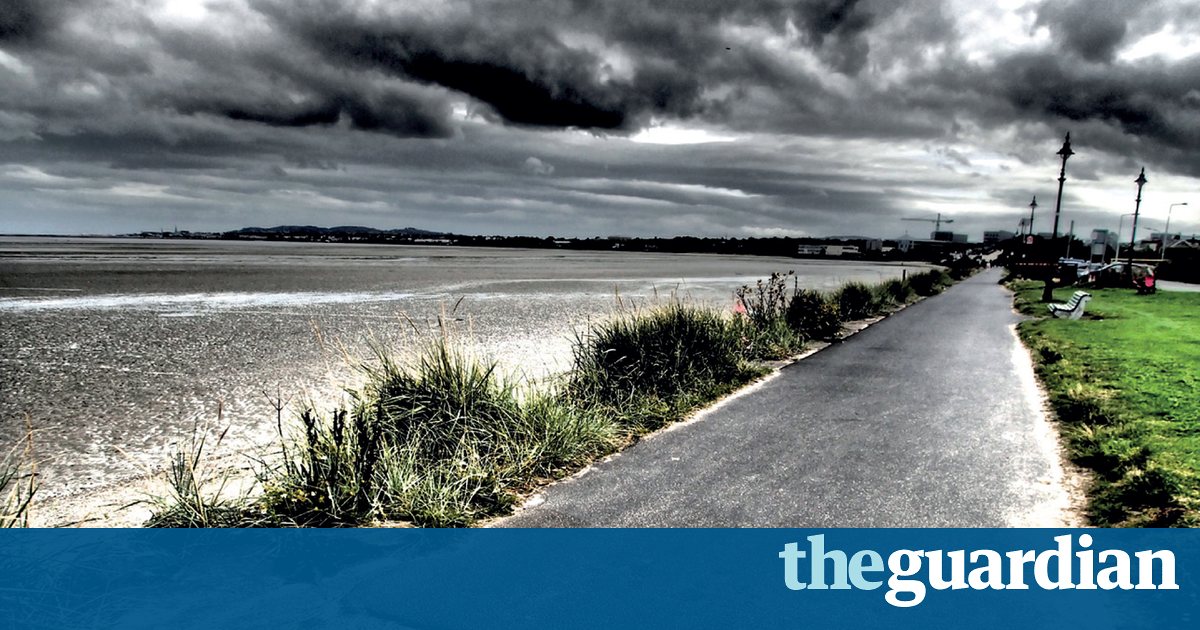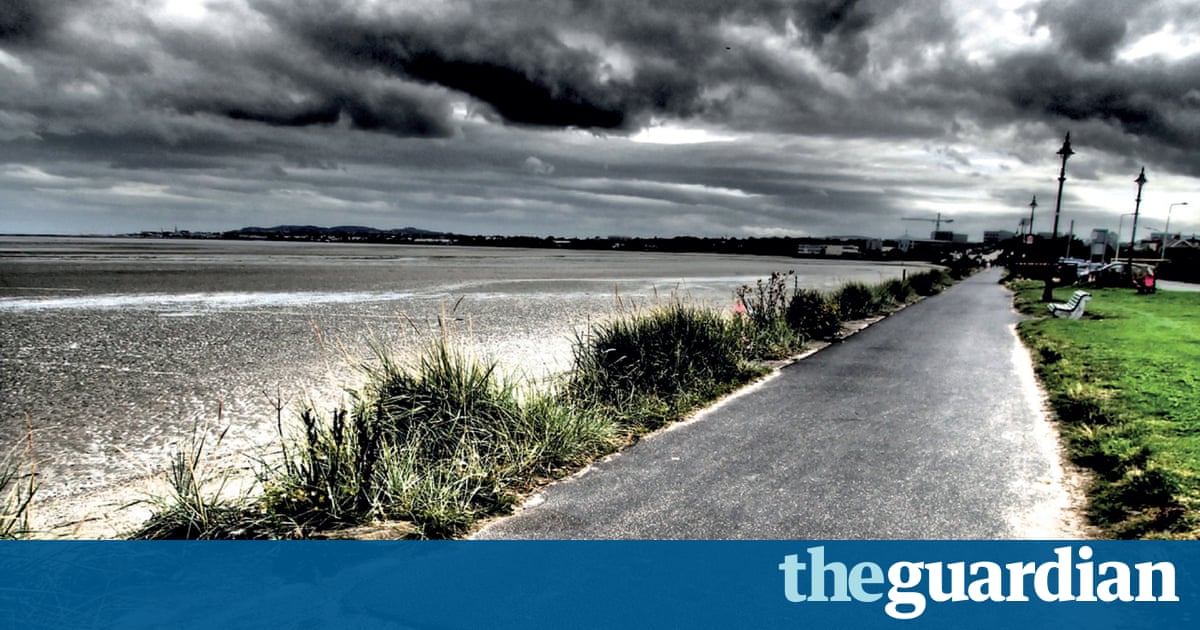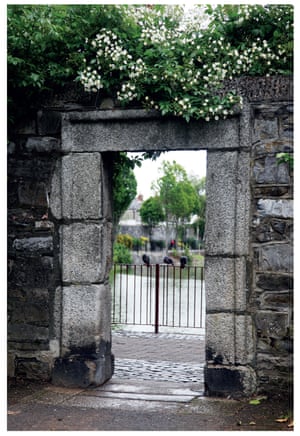John Banvilles Dublin, a city lost and found

When John Banville embarked on a memoir of the city that shaped his early life, his recollections began to falter. He recounts the journey that led him back to the past

Recently I spent a few nights in a New York hotel that I last stayed in a quarter of a century ago. In those days the place had a distinct mid-town Manhattan swish and flair to it, butnow it has become shabby in awaythat I find entirely congenial noTrumpery at all, with an atmosphere rather like that of one of Londons less salubrious gentlemensclubs.
I had been given what the front deskcalled a suite, which turned out to be a box-sized bedroom entirely occupied by a bed that would have accommodated seven or eight sleepers, and a tiny annex that looked like everybodys grannys parlour. When Ihad unpacked, I stepped into the bathroom, wincing away from my haggard reflection in the mirror over the handbasin, like an old-style mobster shying from a barrage of popping flash-bulbs. Just inside the door, immediately to the right, there was a narrow rifle-slit of frosted glass that must have survived from the days when the building was still liable to attack by Native American war-parties certainly it served no contemporary function. As soon as I set an eye on the thing, however, something shot up from the metal window sill, like an electron thrown out from a sheet of radium, and I thought: I know this place Ive stayed here before.
Was I in the same suite I occupied 25 years ago? Perfectly possible, of course, though it would have been quite a coincidence, given the size of the hotel and the hundreds of rooms it had to offer. And if it was the same, why had no other feature of the place set the tuning fork of remembrance vibrating within me? Why should I remember only this mean little window and its aluminium sill?
Memory works in an inscrutable fashion. It seizes on and tucks away for safe-keeping the most negligible trifles, clinging to them through the years with the passionate miserliness of Molires Harpagon. It seems to have no capacity, and no desire, to exercise the least discrimination: all is grist to Mnemosynes mill. So it is that we shallremember with equal vividness the moment we fell in love for the firsttime, and that marble with the flame-red flash at its heart that fat Ronnie Reilly the class bully stole in the school yard at playtime one amber autumn afternoon 60 years ago. And the things it forgets, the apotheoses and apocalypses it lets sift through itsmesh!
As Freud shrewdly observed, what isremarkable is not that we remember, but that we forget.
When the photographer and film-maker Paul Joyce approached me with the idea of our making a book together on the subject of a lost Dublin, I forgot yes, I forgot all that I should have remembered about the blithely treacherous nature of memory, about its playful deceptions, its wilful insistences, its blind spots and black holes. Usually these days I have forgotten by dinner time what I had for lunch, but that kind of forgetfulness has nothing to do with the kind of Proustian feats of remembering I would be required to perform were Itoembark on a memoir of the Dublin Iknew or, more accurately, did not know in the 1950s and 60s. True, much of that Dublin survives, in its physical fabric, much more of it, indeed, than I had imagined would be the case. But who was I then, and whowas I now, to turn back and contemplate if not a lost city, then certainly a lost self?
The question fascinated Wittgenstein, among others, as to whether the babe in arms and the old man on his deathbed can be the same person. Do not the biologists tell us that by the time we reach old age all the cells we began with have been exchanged for new ones? We are that fabled axe which, having had its handle replaced, was found to need anew blade.

I set out for the glades of nostalgia happily enough, with my trusty axe over my shoulder and whistling as insouciantly as Doc or Dopey, not realising I was to prove to be more thelatter than the former.
One of the most vivid memories I retain from childhood is of travelling by early morning train from Wexford, the town where I was born, to the wintry glitz and glamour of Dublin on the eighth of December each year from the age of four or five right up to the brink of adolescence. My birthday fell, and still falls, for that matter, though with an increasingly heavy thud, on 8December, and in those far-off days that date was a public holiday in Catholic Ireland, being the Feast of the Immaculate Conception yes, I know, I know and the day when country folk flocked to the capital to do their Christmas shopping.
The Eighth, as it was to us provincials, or Culchie Day, as Dubliners grimly dubbed it (culchies, in the disdainful vernacular of the capital, were and are the invaders from without the Pale), was for me a momentous occasion, looked forward to with brimming anticipation and mourned with hot tears when it was over: so of course it gave me just the place to start what has turned out to be my partial Dublin memoir.
I wrote an extended first chapter describing the train journey that beganin the pre-dawn darkness, the arrival atmid-morning in a drizzly but, to my eyes, scintillatingly exciting city, the birthday party at my Aunt Nans flat, the shopping trip to Clerys department store … This, I thought, will be childs play.
After that happy start, however, things got difficult. As everyone knows, for they have been told it often enough, the problem about writing about the writing life is that it is so dreary and uneventful all the hot stuff happens in the head: loves, wars, excursions and alarums, while the poor drudge sits hunched at his desk with nothing to indicate the inner turmoils save the tensed knuckles of his writing hand, stretched and sallow as the elbows of a plucked chicken.
The plain fact was, my self and my life were simply not interesting enough to me to sustain the writing of a memoir. I would have to bring in a mentor, a guide, an old hand who knew Dublin far better than I did, and whose memory was unclouded and clear while mine was clogged by decades spent devising plausible fictions. So I called on a friend I willcall Cicero to be my cicerone. Cicero is that rarest of beings, a truly cultured business entrepreneur, property developer and musical impresario. He is also a Dubliner to thebone, and to the heart.
He took me to places I had never known existed, such as the Blessington Street Basin or Sump, as it was unflatteringly called in Ciceros youth which was the citys first reservoir, and now is what the tourist board would describe as a hidden jewel in the heart of the metropolis. But it really is jewel-like, an amethyst set down amid a warren of streets lined with artisan dwellings that are now much sought after by the post-crash moneyed gentry and why not? Cicero was amazed by the transformation that has been wrought. In my day, he said, you wouldnt venture lightly after dark into this neck of the urban woods and look at it now!
Together we visited the Rotunda could any institution be more aptly named? the oldest functioning maternity hospital in the world, founded in the 18th century by a good man to treat the poor of the city. We called into the Botanic Gardens, planned and planted by one of the Rotundas surgeons. We viewed the stones of the original Abbey theatre, scattered prettily about the garden of ahouse on the Vico Road, high on a hillside overlooking Killiney Bay, Dublins answer to the Amalfi coast. We took a perilous tour of No 3 Henrietta Street, now internally a wreck (though it has recently been bought, surely with an eye to renovation), which mustin its day have been one of the handsomest and most sweetly proportioned Georgian houses in theseislands.
We took the shortest canal trip ever on Richie Saunderss renovated Liffey ferry, the last of its kind. From here, said Richie, as we nosed under the exquisite biased brickwork of the first of the Grand Canals bridges, we couldtravel on over to the Shannon! And we ended our months-long odyssey in the furry sunlight of a late-summer evening, drinking a parting glass together in Mulligans of Poolbeg Street, a fine pub and a former stamping ground for both of us.
In between the laps of our tour, I wrote of my early days living with that same Aunt Nan in the dilapidated grandeur of her flat in Upper Mount Street, with Yeatss daughter Anne for aneighbour, and the poet Patrick Kavanagh a frequenter of the front steps, a vantage from which he could scowl across at the offices of the Dolmen Press, Dublins leading publishers of poets, though not of Kavanagh. I recalled lost relatives, uncherished in their time and therefore a source of belated, worthless grief, and first loves, unrequited and now sweetly recollected.
I glanced back too at what I had left behind, at the small-town world of my inexpectant father and my mother whoyearned herself for Dublin as Chekhovs Irina yearned for Moscow. To me, I wrote of my parents, they seemed, until their final years, to be of an indeterminate age, creatures essentially of a different species, permanent and unchanging, simply there. Yet I noted too how, for all that they are gone, something essential of them remains, in my children. It is in the forms of the living that the dead most convincingly haunt us.
For all the crestfallen beauty of its buildings, Dublin was, of course, its people. I sketched a portrait of the Delahaye family, well-to-do Catholics residing their sort always resided in fashionable Fitzwilliam Square, and whose delightful daughter Stephanie Icourted, in vain, among the autumnal shadows of the Iveagh Gardens, and in the ersatz glamour, though it seemed not at all ersatz to us, of the Grafton Street Cinemas first-floor tea rooms. Iwrote of Baggotonia, Dublins answer to Fitzrovia and the Left Bank, where Brendan Behan reeled and Flann OBrien tottered, and too muchdrink was drunk, and too manymasterpieces were talked away on thesmoke-filled air of literary pubs. Iwrote of the sad young prostitutes who haunted the night streets, of the actor Michel Mac Liammir and the theatre manager Hilton Edwards, a homosexual couplebefore their time. Irecalled Irecalledeverything everything, thatis, that I could remember.
But is the Dublin I portrayed the same Dublin that I lodged in, all those years ago? And am I the same I that Iwas then? And when, oh when, does the past become the Past?
Time Pieces: A Dublin Memoir by John Banville, with photographs by Paul Joyce, is published by Hodder & Stoughton on 20 October. To order a copy for 20.49 (RRP 24.95), go to bookshop.theguardian.com or call 0330 333 6846. Free UK p&p over 10, online orders only. Phone orders min. p&p of 1.99.
Read more: https://www.theguardian.com/books/2016/oct/15/john-banville-dublin-city-lost-and-found